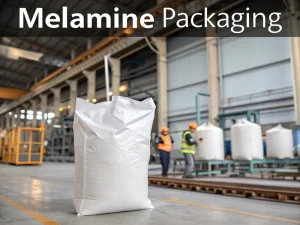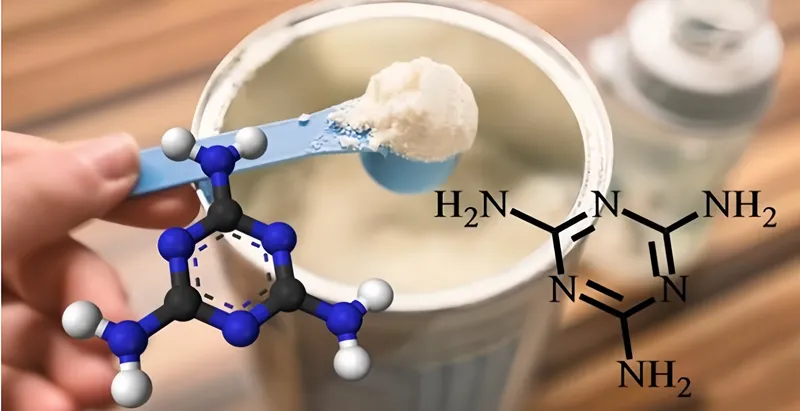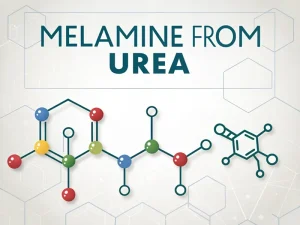
Melamine Packaging
Tech Blog Melamine packaging For manufacturers, inaccurate packaging not only fails to meet national standards but also increases labor costs and the risk of product


Melamine powder is widely used in various industries around us. What are the disadvantages of melamine? This is also a question that many people have. Everything has two sides, and melamine also has its disadvantages, which have attracted people’s attention in industrial applications and public health. Understanding these disadvantages is crucial for making informed decisions about their use and exploring safer and more sustainable alternatives.
One of the most famous and serious drawbacks of melamine is its potential toxicity, especially when it enters the human body.
In 2008, China experienced a significant food safety scandal when melamine was illegally added to infant formula. The intention behind this illegal addition is to artificially exaggerate the apparent protein content of the product in nitrogen-based protein testing methods. After ingestion, melamine will react with cyanuric acid in the kidneys (which may also be present in the body or contaminated products) to form insoluble crystals. These crystals can accumulate and lead to kidney stones, and in severe cases, can also cause kidney failure, especially in young children whose developing organs are more fragile.
Even at lower levels of exposure, melamine can have adverse effects on health. Long-term exposure to melamine-contaminated substances may lead to chronic kidney damage, urinary tract problems, and other health complications. The presence of melamine in food, whether accidental or intentional, poses a significant threat to public health and has led to increased global scrutiny of food safety regulations.

From an environmental perspective, melamine also poses challenges. When products containing melamine are discarded or enter the environment, they will last for a long time. Melamine is relatively challenging to degrade through natural processes such as microbial decomposition. This means that over time, it can accumulate in soil, water bodies, and landfills.
In water sources, melamine can contaminate the drinking water supply and pose a risk to human and animal health. In addition, the presence of melamine in the environment can damage aquatic ecosystems. It may affect the growth, reproduction, and survival of aquatic organisms, leading to an imbalance in the ecosystem. For example, water contaminated with melamine can harm fish, invertebrates, and other aquatic organisms, leading to a chain reaction on the overall health of the food chain and ecosystem.
High temperatures (>160 ° C) or acidic environments can degrade melamine resin and release formaldehyde, a well-known carcinogen that can cause respiratory problems, skin irritation, and other health issues in humans. The degassing of formaldehyde not only poses a risk to workers in the manufacturing process but also to consumers who come into contact with melamine products in their daily lives, such as furniture and kitchenware.
Melamine can cause quality and performance issues in the production of certain consumer goods. For example, in tableware made of melamine formaldehyde resin, if the product is not manufactured properly or exposed to high temperatures (such as in a microwave oven), harmful substances may be released. There are reports that melamine tableware has ruptured, broken, or leached melamine into food and beverages, especially when in contact with acidic or high-temperature substances.
In the construction industry, melamine-based adhesives may not provide the same long-term adhesion and durability as some alternative adhesives. Over time, this may lead to issues such as delamination of laminated boards or failure of bonding structures, which can result in high repair costs and potentially jeopardize the safety and integrity of the building.
Although melamine has various industrial applications, it has many obvious drawbacks. Its toxicity to human health, environmental persistence, industrial limitations, and quality-related issues in products make it a substance that requires careful handling and consideration. Exploring and developing alternative materials and technologies to replace melamine in various applications is crucial as we strive to create a safer, healthier, and more sustainable future. This can not only protect public health and the environment, but also improve the quality and performance of products from different industries.

Tech Blog Melamine packaging For manufacturers, inaccurate packaging not only fails to meet national standards but also increases labor costs and the risk of product

Tech Blog How to Detect Melamine in Textiles? Melamine powder, a nitrogen-containing heterocyclic compound, is widely used in flame-retardant textiles and plastic products due to

Tech Blog melamine from urea Melamine is well-known for its wide range of applications, but its raw material for production is surprisingly urea. For manufacturers,

JINGJIANG MELAMINE POWDER
© JINJIANG MELAMINE